What is Fine Grinding?
- Fine grinding is a batch-mode abrasive machining process that combines the speed and aggressiveness of super abrasive wheels with accuracy of lapping kinematics to produce flat and parallel work piece surfaces.
- The fine grinding cutting tool consists of an upper and lower wheel composed of diamond or cubic boron nitride (CBN) with different bond types (vitrified bond, resin bond or metal bond) and act as the support plates for the work pieces.
- The machine tool has evolved from the vertical double-wheel lapping machine design with a planetary work drive system, also known as “lapping kinematics”.
- In place of lapping wheels, grinding wheels are fitted and cooled through labyrinth in the working wheels and a coolant fed through holes in the upper wheel.
- Since fine grinding requires higher forces and uses higher cutting speeds, motors, gears and the rigidity of the machines are much stronger than lapping machines.
- Work pieces are guided between the upper and lower working wheel in an epicyclical path as defined by inner and outer pin ring, upper and lower working wheel, speeds and directions, while material removal takes place simultaneously on both sides.
Why use Fine Grinding?
General
- Accuracy results, previously only achieved by lapping
- The pellet structure allows a layout of the fine grinding medium, corresponding to the kinematics conditions
- Long and constant process cycles without dressing processes
- The space between the pellets allows a high flow rate of the coolant
- Very good chip flow without temperature problems
- High process quality, consistent repeatability of achieved values
- Also large surface work pieces can be machined
- Fine grinding can use batch processing
- Work pieces are loosely held in carriers and therefore machined stress free (without distortion - especially for machining of thin or delicate parts)
- Work pieces of different shapes could be machined (i.e. round, rectangular or irregular; full surface or with cut-outs)
- Fine grinding is easily automated
Fast
- High removal rate using super abrasive diamond and CBN (3 – 20 times faster than lapping)
- Possible saving of pre-machining steps
- Fine grinding benefits from long intervals between resharpening
- Fine grinding has high flexibility
- Automated solutions
Clean
- Fine grinding benefits from the recycling of coolant
- Tremendous less waste than with lapping
- Minimal work piece cleaning necessary
- Fine grinding reduces downtime
- Cleaning of work pieces without problems by rinsing; in comparison to lapping ultrasonic or chemical cleaning is not necessary
Economic
- Fine grinding has a high removal rate (reduces capital costs and personnel expenditure)
- Low wheel wear and long life time of the grinding wheels (reduces the tool costs)
- Low waste disposal costs (reduces the current running costs)
- Low work piece cleaning costs (reduces the current running costs)
- Fine grinding may have a possible saving of additional machining steps
- Easy wheel maintenance _low tool manufacturing costs by using a “Standard-Pellet-Form”
Fine Grinding
- Performed with super abrasive (diamond or cubic boron nitride - CBN) wheels
- Stock removal caused by micro grooving / -cutting
- Fine-ground surface has cross-hatched marks
- Coolant is recycled
- Fine-ground parts are coated only with a thin layer of coolant and therefore only minimal workpiece cleaning is necessary
- Wheel speeds are typically 2 – 15 m/s
- 3 – 20 times faster than lapping (removal rate)
Lapping
- Lapping is a working process, during which workpiece and tool slide over one another on a loosely applied medium (lapping compound) and are subject to continually changing direction of rotation.
- Stock removal caused by rolling and sliding action of abrasive grains
- Lapped surface is dull and crater-like
- Material and lapping compound are not recycled
- Lapped parts are contaminated with lapping compound and require cleaning
- Lapping speeds are generally limited to < 1 m/s
Definition of the Tooling Methods
- Lapping flat parts – single or double-side) is the abrasive machining process for removing material using a loose abrasive in a liquid mixture (known as a slurry) at low speeds.
- Loose abrasive is moving over the surface under pressure (fig. 1), will knead, abrade, chip or scrape away the surface of the workpiece (fig. 2). By exceeding the bending strength the material breaks out.
- Fine Grinding (flat parts – single or double-side) is the abrasive machining process for removing material using a bonded Superabrasive wheel at low speed with a liquid to keep the part cool. The fixed grain of a geometrically indefinable cutting shape acts like a plow (fig. 3) and material is removed by micro-grooving /-cutting (fig. 4). The chip formation occurs by exceeding the shearing strength.
Fine Grinding vs Lapping
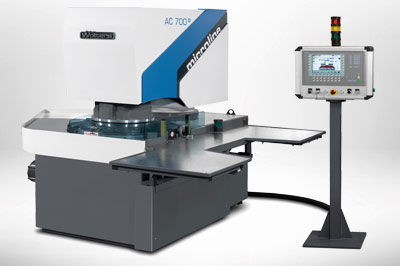
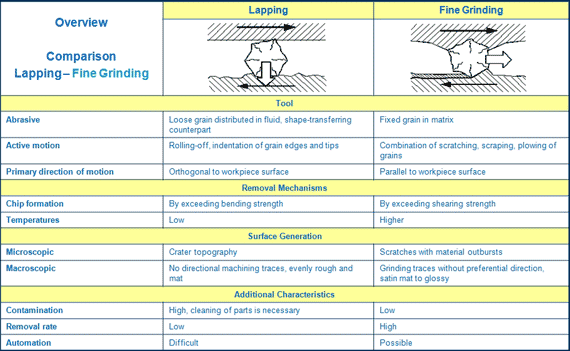
Kinematics of the Fine Grinding Process
Fine Grinding generally follows the same kinematic principle as lapping. The fine grinding workpieces are held in carriers which are driven to describe a planetary motion covering the full surface of the Fine Grinding wheel. The drive mechanism consists of an inner and outer pin ring. The outer ring is generally fixed while the inner ring rotates in either the opposing or the same direction as the lower working wheel to create a series of epicyclic rotations.
Why use Lapmaster Fine Grinding Machines and Systems?
Lapmaster fine grinding machines and systems offers a complete line of products for all fine grinding requirements. We can offer fully integrated systems and machines for high volume fine grinding and industrial production applications and equipment for low volume job shop applications. Lapmaster also offers used fine grinding (rebuilt and refurbished) and upgrade services for existing fine grinding machines. We provide our customers with fully engineered complete custom solutions and offer a full line of accessories and consumables in addition to comprehensive training and repair services.
Our extensive line of fine grinding machines / systems for both medium to large-scale serial production as well as small batch production; these systems can be made to be manually operated or fully automated. With innovation and customer service as our main objectives, Lapmaster continuously researching and developing new technology and fine grinding machinery. By consistently staying on top of the latest developments on the market, we ensure that our customers are provided with the most state-of-the-art production and control.
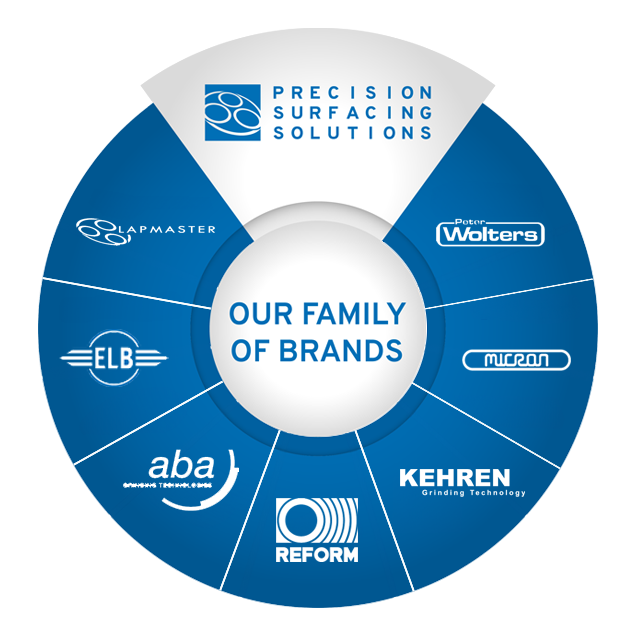
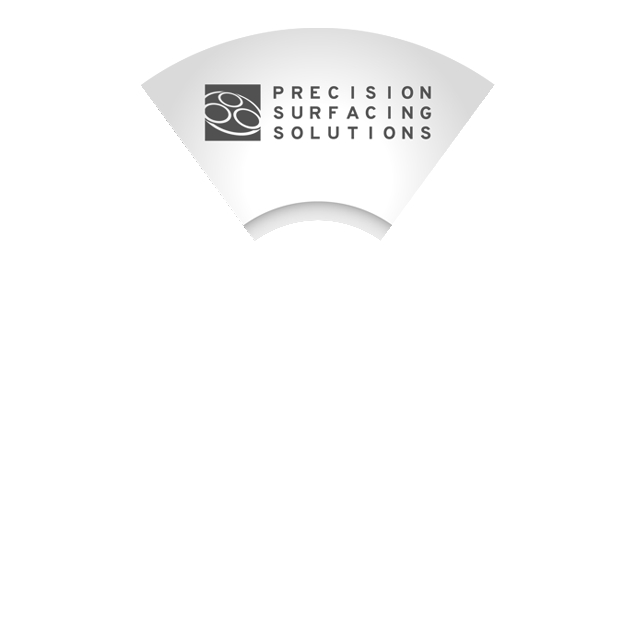
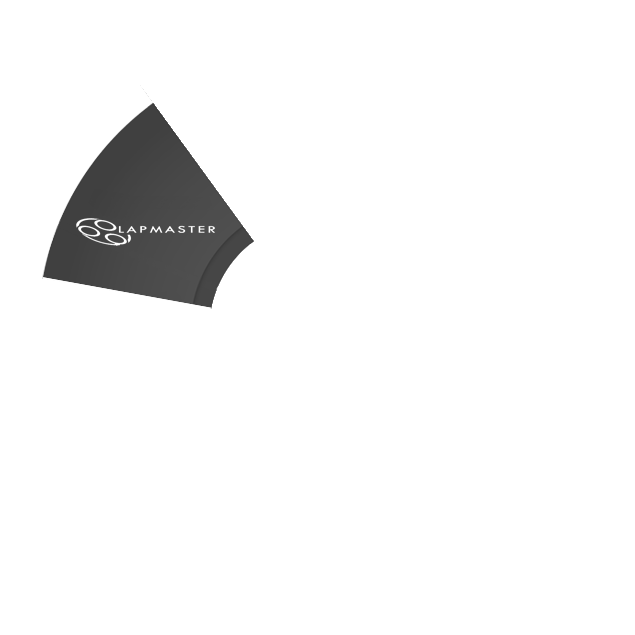
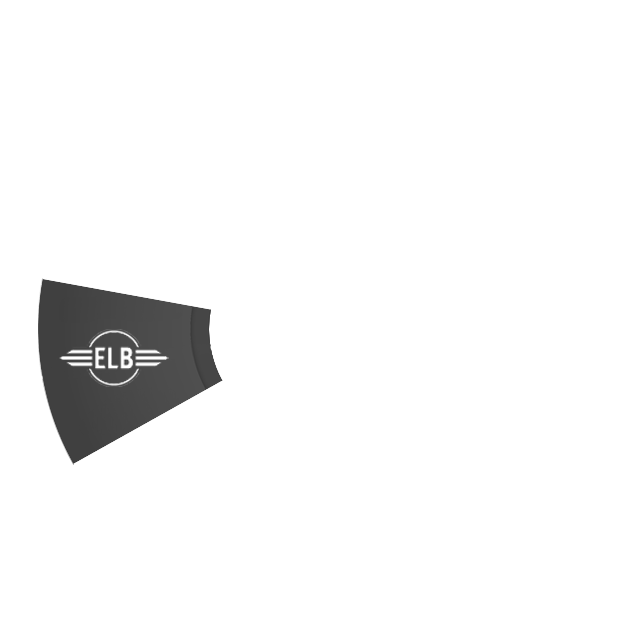


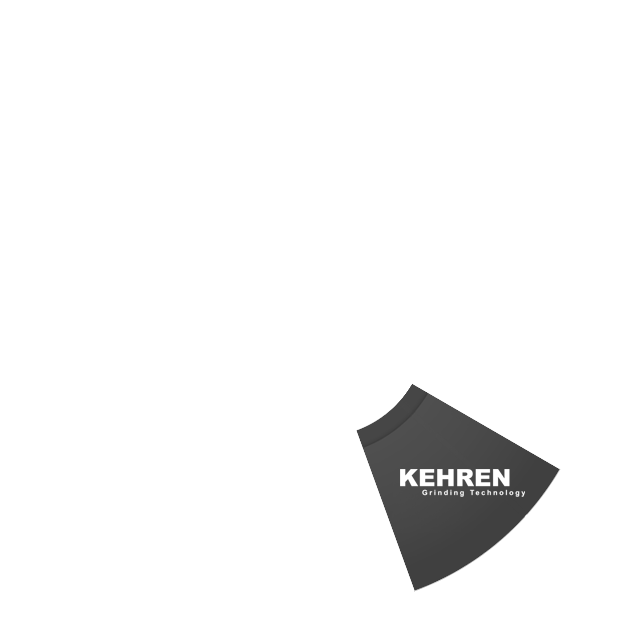


PRECISION SURFACING SOLUTIONS
PRECISION SURFACING SOLUTIONS supports manufacturers in a wide variety of industries in which precision grinding, lapping, polishing, deburring and advanced materials processing equipment is commonly used. They all need high-quality, high-precision, stable and well-engineered machines to manufacture high-quality work pieces.
Visit SiteLapmaster Wolters
Founded in Chicago in 1948 as a manufacture of lapping and polishing machines for the mechanical seal market, Lapmaster has grown to a worldwide solution provider for more than 20 industries like precision optics and advanced materials.
Visit SiteELB-Schliff
ELB-Schliff Werkzeugmaschinen GmbH has been producing surface and profile grinding machines for over 70 years. The company was founded by Edmund Lang in the city of Babenhausen which led to the name "ELB-Schliff".
Visit Siteaba Grinding
The aba company was founded in 1898 under the name "Messwerkzeugfabrik Alig & Baumgärtel Aschaffenburg", hence the initials aba. Today, the aba Grinding Technologies is exclusively focused on the advancement and production of precision surface and profile grinding machines.
Visit SiteREFORM
REFORM Grinding Technology GmbH is specialized in the sales, development & production of grinding machines for various applications at its location in Aschaffenburg (Germany).
Visit SiteKEHREN
Founded in 1934, KEHREN is a well-established designer and builder of high-precision grinding machine tools and systems under the following categories: vertical grinding centers, vertical grinding centers with portal design, surface grinders with rotary tables and horizontal spindles, and surface grinders with dual rotary tables and vertical spindles.
Visit SiteMicron
Produced in Germany since 2009, MICRON machines are compact and dynamically rigid grinding machines especially designed for Creep Feed and Profile grinding. MICRON is an industry leader in grinding of Hydraulic components like stators, rotors and van pumps.
Visit SitePeter Wolters
Founded in Germany in 1804 by Mr. Peter Wolters, Peter Wolters has been producing lapping, polishing and fine grinding equipment since 1936. In 2019 Precision Surfacing Solutions acquired the division Wafer plant and service business for photovoltaic and special materials of Meyer Burger. Further Information can be found at www.precision-surface.ch
Visit Site



